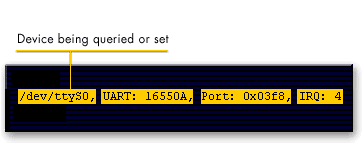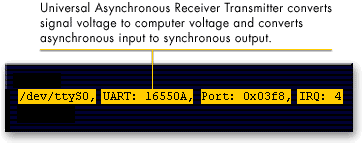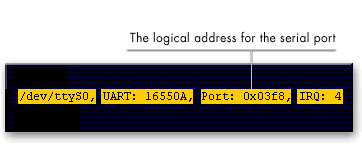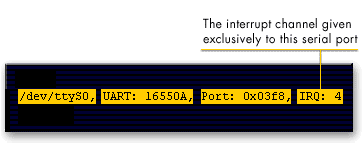Redhat setserial Command
The kernel will make its best effort to correctly determine how your serial hardware is configured, but the variations on serial device configuration makes this determination difficult to achieve 100 percent reliably in practice.
A good example of where this is a problem is the internal modems we talked about earlier. The UART they use has a 16-byte FIFO buffer, but it looks like a 16450 UART to the kernel device driver: unless we specifically tell the driver that this port is a 16550 device,
the kernel will not make use of the extended buffer. Yet another example is that of the dumb 4-port cards that allow sharing of a single IRQ among a number of serial devices. We may have to specifically tell the kernel which IRQ port it's supposed to use, and that IRQs may be shared.
setserial was created to configure the serial driver at runtime. The setserial command is most commonly executed at boot time from a script called 0setserial on some distributions, and rc.serial on others. This script is charged with the responsibility of initializing the serial driver to accommodate any nonstandard or unusual serial hardware in the machine
setserial was created to configure the serial driver at runtime. The setserial command is most commonly executed at boot time from a script called 0setserial on some distributions, and rc.serial on others. This script is charged with the responsibility of initializing the serial driver to accommodate any nonstandard or unusual serial hardware in the machine



